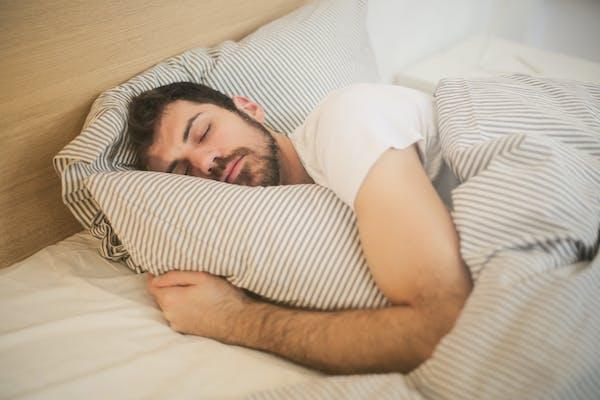A shortage of sleep is becoming a recurring trait among adults in Europe and America. One reason for this is light intake. More than 65% of Americans say they do not get enough sleep during the week. Moreover, most people do not get the required amount of natural light—on average, Americans spend 90% of their day indoors.
Besides not getting enough light, humans are constantly inundated by non-natural blue light sourced from overhead lighting and computer screens. This overabundance of artificial blue light can result in headaches. It can even make falling and staying asleep difficult.
Does Light Affect Our Sleep?
When all the blue light gained from phones, TVs, and laptops all through the day are soaked up the body, our bodies read that to mean it is daytime. This makes it hard for us to sleep even when we are exhausted.
This happens because we aren’t producing enough melatonin, the hormone the body produces to regulate wakefulness and sleep. Research has shown that red light therapy for sleep treatment can increase the natural production of melatonin. Red light therapy is natural light and is a lot less bright than blue light. This is down to it having a lower color temperature compared to daytime sun.
Studies have shown that, unlike bright blue light, red light does not affect your sleep cycle. Studies have also shown red light therapy for sleep to be advantageous for individuals with sleep disorders and insomnia.
What Is Red Light Therapy?
Red light therapy is a non-invasive procedure that transports intense natural light to your cells and skin. Results from red light therapy for sleep have been shown to improve sleep duration and quality. It can also help people naturally produce a lot more melatonin.
Red light therapy for sleep treatments is simple and quick: you simply stand or sit in natural light for 5 to 15 minutes. Ideally, you should do this daily as it stimulates the mitochondria and gives your cells the natural light that gives you the energy you need.
Unbeknownst to most people, light plays an important part in your sleep pattern. Your circadian clock views light as a signal of when to be awake and when to be asleep. Computers, phones, and other screens emit artificial blue light that can be sufficiently bright to affect your circadian rhythm. Red light has a reverse effect and a lower color temperature than blue light. This makes it great for evenings.
How Can Red Light Therapy Help You Fall Asleep?
Natural light can be important for restful sleep and a beneficial circadian rhythm. If you struggle to sleep, then the amount of light you take could be a significant variable. Red light therapy can deliver the natural light you need from the sun without the excess heat, sunny weather, or UV rays.
Red light therapy treatments can provide your cells with the required natural light it needs to create ATP or adenosine triphosphate. ATP is necessary to help your body run a lot more efficiently and heal faster. It also helps provide more natural melatonin, improving your sleep disorder like insomnia.
Further research was carried out on individuals with sleep disorders and migraines to show if red light therapy for sleep could decrease headache frequency. The results showed that red light therapy for sleep decreased headache frequency and was the only treatment that improved sleep disorders.
In 2013, a study to analyze electrical brain activity discovered the efficacy of red light therapy for sleep in aiding individuals with sleep disorders to get better sleep.
Furthermore, red light therapy treatments have been known to offer improved sleep results in a vast array of peer-reviewed research and clinical studies. One studied the effect red light therapy had at night for improved sleep quality, particularly in the short term. Using these results, the scientists discovered that red light therapy could become a great non-invasive and drug-free answer to sleep issues.
A study was carried out in 2014 on traumatic brain injury and cognitive function. Study results showed that post traumatic stress disorder episodes had significantly decreased in participants. The study also showed a marked improvement in sleep.
Shop our: Grounding Socks
Shop our: Grounding Sheets for Bed
The Correlation Between Red Light Therapy, Depression, Seasonal Affective Disorder, and Depression
One of the most prevalent issues linked with seasonal affective disorder is trouble sleeping. Seasonal affective disorder is a form of depression affecting people during dark winter.
Scientists are conducting research to show the correlation between sleep disorders and mood. Certain areas of the brain responsible for regulating sleep have been found to also influence mood.
A review conducted in 2013 showed that almost all individuals dealing with mood issues have recorded substantial disruptions in the sleep/wake pattern and circadian rhythms.
Certain doctors treating patients suffering from mental health issues have stated that red light therapy and meditation can help improve mood and aid individuals suffering from depression in getting better sleep.

